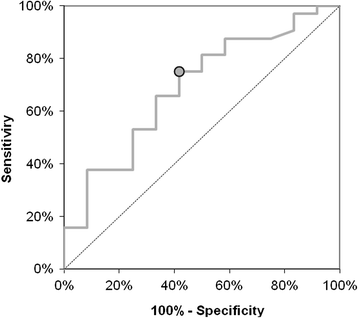Chemerin as a novel non-invasive serum marker of intrahepatic lipid content in obese children
- PMID: 25399407
- PMCID: PMC4237733
- DOI: 10.1186/s13052-014-0084-4
Chemerin as a novel non-invasive serum marker of intrahepatic lipid content in obese children
Abstract
Background: Ectopic hepatic lipid accumulation is closely related to the development of insulin resistance, which is regarded as one of the most significant risk factors of non-alcoholic fatty liver disease (NAFLD). The current study has shown that fat tissue constitutes an important endocrine organ with its own production and metabolism of many biologically active substances, among which adipokines play an important role. Classic adipokines (e.g. leptin, adiponectin, resistin) are fat-derived hormones which serum level is altered in patients with NAFLD. The role of novel adipokines in the pathomechanism of this disease is not clear. Therefore, the aim of our study was to evaluate the serum concentrations of chemerin, omentin and vaspin in obese children with NAFLD.
Methods: Forty-five obese children, aged 7-17 years old, were admitted to our Department with suspected liver disease (hepatomegaly, and/or ultrasonographic liver brightness, and/or increased ALT activity). Viral hepatitides, as well as autoimmune and metabolic liver diseases were excluded. Fasting serum levels of chemerin, omentin and vaspin were determined. The grade of liver steatosis in ultrasound was graded according to Saverymuttu. (1)HMR spectroscopy was performed with a 1.5 T scanner and with PRESS sequencing.
Results: Fatty liver was confirmed in 39 children by ultrasound and in 33 patients by (1)HMRS (19 of them also had increased ALT activity /NAFLD/). Chemerin and vaspin levels were significantly higher in children with NAFLD compared to the control group (n = 30). The concentration of chemerin was significantly higher in children with advanced liver steatosis compared to non-hepatopathic patients (p = 0,02). Significant positive correlations were found between the total liver lipids in (1)HMRS and chemerin (r = 0,33; p = 0,02) and vaspin (r = 0,4; p = 0,006). The ability of serum chemerin (cut-off = 190 ng/ml, Se = 75%, Sp = 58%) to differentiate children with fatty liver in (1)HMRS from those without steatosis was significant (AUC = 0,7, p = 0,04). Omentin and vaspin did not allow a useful prediction to be made.
Conclusion: Chemerin seems to be the most suitable non-invasive biomarker in predicting both intrahepatic lipid content in obese children and advanced liver steatosis in children with NAFLD.
Figures
References
-
- Fox CS, Massaro JM, Hoffmann U, Pou K, Maurovich-Horvath O, Liu CY, Vasan RS, Murabito JM, Meigs JB, Cupples LA, D’Agostino RB, O’Donnell CJ. Abdominal, visceral and subcutaneous adipose tissue compartments: association with metabolic risk factors in the Framingham Heart Study. Circulation. 2007;116:39–48. doi: 10.1161/CIRCULATIONAHA.106.675355. - DOI - PubMed
Publication types
MeSH terms
Substances
LinkOut - more resources
Full Text Sources
Other Literature Sources
Medical
Miscellaneous


